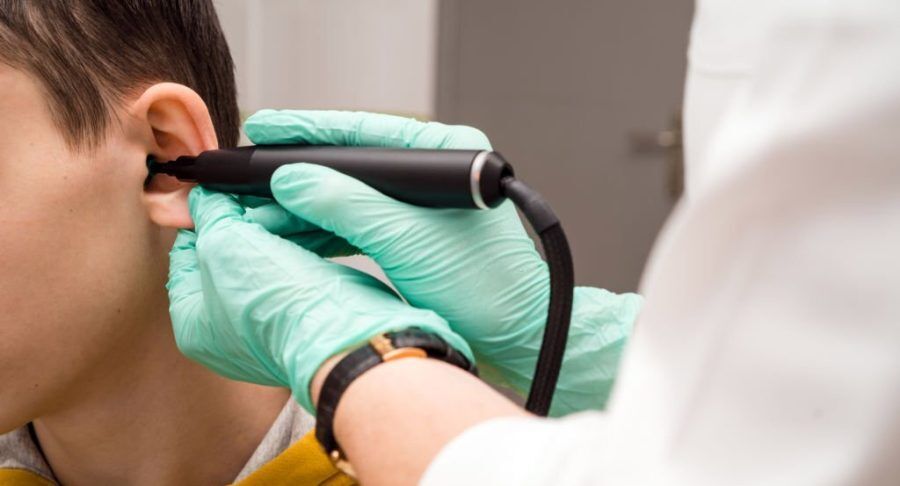Ear
- Home
- EAR

SINUS
Fast Facts: Sinusitis
Sinusitis is an inflammation of the nasal sinuses, which are hollow cavities within the cheek bones found around and behind the nose. The inflammation is usually caused by inadequate draining due to allergy, infection or obstruction. Common symptoms include thick yellowish/green nasal discharge, headache, feelings of facial fullness, congestion, fatigue, and fever.
In the 1993 National Health Interview Survey (NHIS), sinusitis was the most frequently reported chronic disease, affecting 14.7 percent of the population, accounting for the fifth highest antibiotic use of all diseases, and 11.6 million physician visits per year.
Causes of Sinusitis
There are two types of sinusitis. The first is acute sinusitis, which is caused by bacterial infection in most cases, and usually occurs as a late complication of a common cold. When this happens, nasal congestion produces swelling in the sinus cavity, obstructing drainage and causing mucus to stagnate, providing a perfect breeding ground for an infection. Although colds are the most common cause of acute sinusitis, those with allergies may also be predisposed to the development of sinusitis. Allergy can cause chronic inflammation of the sinus and nasal mucous linings. If you test positive for allergies, your physician can prescribe appropriate medications to control them, thereby reducing the risk of developing infection.
Sinusitis treatment is expertise of Dr Tejal Shah, an ENT surgeon at gurukul road, Ahmedabad. We treat all age group patients having any ear, nose and throat related diseases.
What is Allergy ?
Known as Hay fever, or Allergic Rhinitis , is caused by an allergy to tree, grass or weed pollen or to mold spores. The name “hay fever” is used to describe allergic rhinitis because hay (or grass pollen) was the first allergen identified as a cause of allergy symptoms, and patients often feel feverish. If severe and untreated, hay fever may trigger asthma or lead to other serious conditions, such as sinusitis and otitis media (inner ear infections). hay fever can be a seasonal or year-round health problem.
Common rhinitis signs and symptoms include
- Runny or stuffy nose; sneezing
- Watery Eyes
- Pressure in the nose and cheeks
- Itchy nose, eyes, and roof of mouth
- Ear blockage
- Dark circles or puffiness under the eyes.
What Are Nasal Polyps?
Nasal polyps are tissue structures shaped like grapes that hang in the nasal passages. They are usually connected to the lining of the sinuses. Polyps are swollen tissues that originate in inflamed sinuses. In other words, the mucus membranes (lining tissues) of the airways are affected by inflammation. This airway inflammation can involve only one part of the airways or the entire length of the airways. It may be present in only the sinuses and nose or the airways to the lungs as well (asthma). Nasal polyps are not cancerous (i.e., they are benign).
What is an ear infection?
There are several types, but in children, an “ear infection” usually means otitis media, a bacterial infection of the middle ear.
There are three main parts of the ear- the outer ear, the middle ear and the inner ear. The outer ear is just the pinna (the part that sticks out of the head) and the ear canal, which ends at the eardrum. The ear canal is where earwax accumulates. The middle ear is the space behind the eardrum. This space is drained and ventilated by a pathway called the Eustachian tube, which runs from the ear to the back of the nose, near the adenoids. The inner ear is deep inside the skull, and is where the nerves and other structures controlling hearing and balance are located. It is rarely affected by childhood ear infections.
In the case of otitis media, the middle ear fills up with infected fluid (pus). This can cause pain, fever, irritability and a temporary hearing loss. Acute otitis media is often treated with antibiotics.
Another common type of ear infection is Otitis Externa or “swimmer’s ear”, an infection of the skin of the ear canal (outside of the eardrum). The ear canal is a warm, moist place which is not easily cleaned, and a superficial skin infection can linger in this region (just like a diaper rash!). These patients have ears which hurt when moved and which itch severely.
